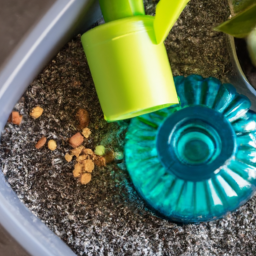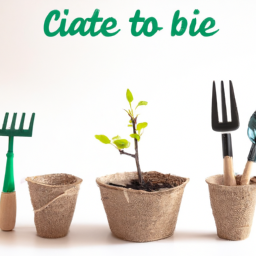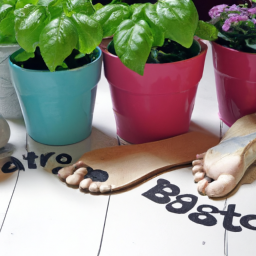
Are you looking for ways to conserve water and reduce your environmental impact in your indoor gardening practices? Reusing water in indoor gardening, specifically through gray water solutions, is a sustainable and cost-effective solution that can benefit both your plants and the planet. By incorporating gray water systems into your indoor gardening setup, you can minimize water waste and promote a more eco-friendly approach to plant care. In this blog post, we will explore the benefits of reusing water in indoor gardening, discuss different gray water solutions, and provide tips on how to effectively implement them in your own space. Let’s dive in and discover how you can make a positive impact on the environment while nurturing your indoor garden.
Benefits of Reusing Gray Water in Indoor Gardening
As an expert in indoor gardening and sustainable water practices, I am excited to share with you the numerous benefits of reusing gray water in your indoor garden. Gray water, which is water that has been used in sinks, showers, and washing machines, can be a valuable resource for watering your plants. Not only does reusing gray water help conserve water and reduce your water bill, but it also provides nutrients to your plants, promoting healthier growth and reducing the need for chemical fertilizers.
One of the key benefits of using gray water in indoor gardening is its sustainability. By reusing water that would otherwise go down the drain, you are conserving a precious resource and reducing the strain on municipal water supplies. This can be especially important in areas experiencing water shortages or drought conditions. Additionally, using gray water can help reduce your environmental impact by decreasing the amount of wastewater that needs to be treated and disposed of.
Another advantage of using gray water in indoor gardening is its nutrient content. Gray water contains trace amounts of nutrients such as nitrogen, phosphorus, and potassium, which are essential for plant growth. By using gray water to water your plants, you are providing them with a natural source of nutrients that can help them thrive. This can result in healthier, more vibrant plants that require less synthetic fertilizers, reducing the potential for chemical runoff and pollution.
How to Collect and Store Gray Water for Indoor Gardening
Collecting and storing gray water for indoor gardening is a relatively simple process that can be done with minimal equipment and effort. One common method is to install a gray water diversion system in your home, which redirects water from sinks, showers, and washing machines to a storage tank or container. This water can then be used to water your plants as needed.
When collecting gray water, it is important to use biodegradable soaps and detergents to minimize the impact on your plants and the environment. Avoid using water that has come into contact with harsh chemicals or toxins, as these can be harmful to your plants. Additionally, be sure to filter out any large debris or particles before storing the water to prevent clogs and damage to your watering system.
Storing gray water properly is essential to prevent the growth of bacteria and algae. Keep the water in a sealed container or tank to prevent contamination, and use it within a few days to ensure freshness and effectiveness. Regularly clean and maintain your storage system to prevent odors and ensure the quality of the water for your plants.
Tips for Using Gray Water in Indoor Gardening
When using gray water in indoor gardening, it is important to follow a few key tips to ensure the health and vitality of your plants. First, be mindful of the type of plants you are watering with gray water, as some may be more sensitive to certain contaminants or chemicals. Avoid using gray water on edible plants or those with delicate foliage, as they may be more susceptible to damage.
Monitor the moisture levels of your plants and adjust your watering schedule as needed when using gray water. Since gray water may contain varying levels of nutrients and salts, it is important to avoid overwatering and causing nutrient imbalances in your plants. Pay attention to any signs of stress or discoloration in your plants, and adjust your watering practices accordingly.
Finally, be mindful of local regulations and guidelines regarding the use of gray water in indoor gardening. Some areas may have restrictions on the use of gray water or specific requirements for its collection and storage. By following these regulations and best practices, you can ensure that you are using gray water safely and responsibly in your indoor garden.

Implementing Gray Water Systems for Indoor Plants
Understanding Gray Water
Gray water is water that has been used in sinks, showers, baths, and washing machines. It is not suitable for drinking, but it can be safely used for watering indoor plants. Gray water contains some nutrients that can benefit your plants, making it a sustainable and eco-friendly option for watering your indoor garden.
When implementing a gray water system for indoor plants, it is important to consider the quality of the water and the specific needs of your plants. Make sure to use biodegradable soaps and detergents to minimize the impact of chemicals on your plants. Additionally, avoid using water that has come into contact with harsh chemicals or toxins.
Choosing the Right System
There are several different gray water systems that you can use for watering your indoor plants. One option is a simple bucket system, where you collect water from your sinks and showers and manually water your plants. This is a cost-effective option, but it requires more effort on your part.
Another option is a branched drain system, where gray water is diverted from your sinks and showers to a separate drainage system for your indoor plants. This system requires some plumbing work, but it provides a more automated solution for watering your plants.
For a more advanced option, you can invest in a gray water filtration system that purifies the water before it is used for watering your plants. This ensures that your plants are not exposed to any harmful contaminants, and it provides a consistent source of water for your indoor garden.
Implementing the System
Once you have chosen the right gray water system for your indoor plants, it is important to properly install and maintain the system to ensure the health of your plants. Make sure to regularly check for leaks or clogs in the system, and clean the filters or screens as needed to prevent any blockages.
When using gray water for indoor plants, it is important to monitor the moisture levels of the soil and adjust your watering schedule as needed. Gray water contains some nutrients, but it is still important to supplement with additional fertilizers to ensure that your plants are receiving all the nutrients they need to thrive.
Overall, implementing a gray water system for indoor plants is a sustainable and eco-friendly way to water your indoor garden. By choosing the right system, understanding the quality of the water, and properly maintaining the system, you can enjoy healthy and thriving plants while conserving water and reducing your environmental impact.

Best Practices for Using Gray Water in Indoor Gardening
As an expert in reusing water in indoor gardening, I understand the importance of utilizing gray water as a sustainable solution for watering plants. Gray water, which is water that has been used in sinks, showers, and laundry, can be a valuable resource for indoor gardens. By following best practices, you can effectively use gray water to nourish your plants while reducing water waste.
Choosing the Right Gray Water System
When it comes to using gray water in indoor gardening, it’s important to choose the right system for your needs. There are a variety of gray water systems available, including simple bucket systems, branched drain systems, and more complex filtration systems. Consider the size of your indoor garden, the types of plants you are growing, and your budget when selecting a gray water system.
One popular option for indoor gardening is a simple bucket system, where you collect water from sinks and showers and manually water your plants. This is a cost-effective solution that can be easily implemented in small indoor gardens. For larger indoor gardens, a branched drain system may be more suitable, as it allows you to divert gray water from multiple sources to different areas of your garden.
Regardless of the system you choose, it’s important to regularly maintain and clean your gray water system to prevent the buildup of debris and contaminants. This will ensure that your plants receive clean and healthy water for optimal growth.
Ensuring Proper Water Quality
One of the key considerations when using gray water in indoor gardening is ensuring proper water quality. Gray water can contain traces of soap, detergent, and other chemicals that may be harmful to plants if not properly filtered out. To improve water quality, consider installing a filtration system or using natural additives, such as vinegar or baking soda, to neutralize any harmful substances in the water.
It’s also important to monitor the pH levels of your gray water to ensure that it is suitable for your plants. Most indoor plants prefer slightly acidic water, so test the pH of your gray water regularly and adjust as needed. Additionally, avoid using gray water that has come into contact with harsh chemicals or toxins, as this can harm your plants and soil over time.
By taking steps to ensure proper water quality, you can safely use gray water in your indoor garden without risking the health of your plants.
Implementing Water Conservation Practices
Using gray water in indoor gardening is not only a sustainable solution, but it also helps conserve water resources. To maximize water conservation, consider implementing additional practices in your indoor garden, such as mulching, drip irrigation, and rainwater harvesting. These practices can help reduce water waste and ensure that your plants receive the hydration they need to thrive.
Mulching, for example, can help retain moisture in the soil and reduce the need for frequent watering. Drip irrigation systems deliver water directly to the roots of plants, minimizing evaporation and runoff. Rainwater harvesting allows you to collect and store rainwater for later use in your indoor garden, further reducing your reliance on traditional water sources.
By combining the use of gray water with water conservation practices, you can create a sustainable and efficient watering system for your indoor garden that benefits both your plants and the environment.
I’ll leave you with these final thoughts
Indoor gardening is a popular trend for those looking to bring a bit of greenery into their homes, but it can also be a drain on resources like water. One solution to this problem is reusing water, specifically gray water, in your indoor garden. Gray water is the gently used water from sources like sinks, showers, and laundry machines that can be repurposed for watering plants. Not only does reusing gray water help conserve water and reduce your environmental impact, but it can also save you money on your water bill.
There are a few important things to keep in mind when using gray water in your indoor garden. It’s crucial to only use biodegradable soaps and detergents to avoid harmful chemicals seeping into your plants. Additionally, make sure to avoid using gray water on edible plants to prevent any potential health risks. By implementing gray water solutions in your indoor gardening routine, you can enjoy a lush and thriving garden while also doing your part to conserve water and protect the environment.
Check Out These FAQs:
Q1. Can I reuse gray water for indoor gardening?
A1. Yes, gray water can be reused for indoor gardening. Gray water is water that has been used in sinks, showers, or laundry and can be safely used to water plants as long as it does not contain harmful chemicals or pathogens.
Q2. What are some gray water solutions for indoor gardening?
A2. Some common gray water solutions for indoor gardening include collecting water from showers or sinks in a bucket, installing a gray water filtration system, or using a drip irrigation system to water plants directly with gray water.
Q3. Are there any precautions to take when using gray water for indoor gardening?
A3. It is important to avoid using gray water that contains chemicals, such as bleach or harsh cleaning agents, as these can harm plants. Additionally, it is recommended to only use gray water on ornamental plants and not on edible plants.
Q4. How often should I use gray water for indoor gardening?
A4. The frequency of using gray water for indoor gardening will depend on factors such as the size of your plants, the type of soil they are planted in, and the amount of sunlight they receive. It is best to monitor the moisture levels of the soil and adjust your watering schedule accordingly.
Q5. Are there any benefits to reusing water in indoor gardening?
A5. Reusing water in indoor gardening not only helps conserve water but also reduces the amount of wastewater that needs to be treated and disposed of. Additionally, using gray water can provide plants with nutrients that are present in the water, such as nitrogen and phosphorus.

Alex Turner is a sustainable gardening advocate and the founder of an acclaimed indoor gardening blog. With a focus on eco-friendly practices and urban sustainability, Alex combines his background in environmental studies with his love for plants to educate readers on mindful indoor gardening. His work highlights the importance of nurturing both plants and the planet.


